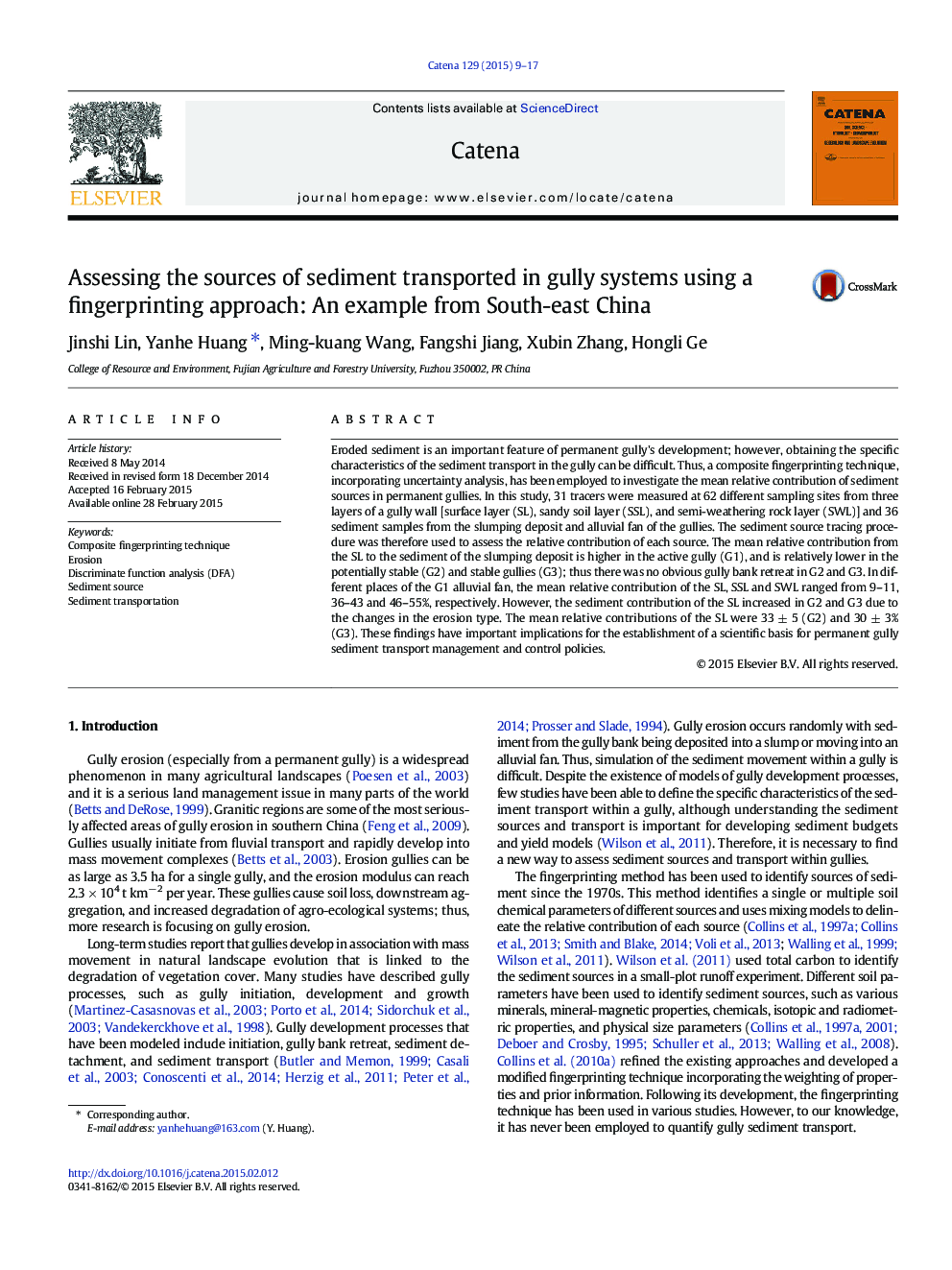| Article ID | Journal | Published Year | Pages | File Type |
|---|---|---|---|---|
| 4571260 | CATENA | 2015 | 9 Pages |
•The sediment movement in gully using fingerprinting method was evaluated.•Tracers afforded over 97% correct assignations in discriminate sediment sources.•Surface soil layer contributed 70% of slumping deposit sediment in active gully.•In potential stable and stable gully sediments mainly coming from other two layers•Only 10% of alluvial fan's sediment came from surface layer soils in active gully.
Eroded sediment is an important feature of permanent gully's development; however, obtaining the specific characteristics of the sediment transport in the gully can be difficult. Thus, a composite fingerprinting technique, incorporating uncertainty analysis, has been employed to investigate the mean relative contribution of sediment sources in permanent gullies. In this study, 31 tracers were measured at 62 different sampling sites from three layers of a gully wall [surface layer (SL), sandy soil layer (SSL), and semi-weathering rock layer (SWL)] and 36 sediment samples from the slumping deposit and alluvial fan of the gullies. The sediment source tracing procedure was therefore used to assess the relative contribution of each source. The mean relative contribution from the SL to the sediment of the slumping deposit is higher in the active gully (G1), and is relatively lower in the potentially stable (G2) and stable gullies (G3); thus there was no obvious gully bank retreat in G2 and G3. In different places of the G1 alluvial fan, the mean relative contribution of the SL, SSL and SWL ranged from 9–11, 36–43 and 46–55%, respectively. However, the sediment contribution of the SL increased in G2 and G3 due to the changes in the erosion type. The mean relative contributions of the SL were 33 ± 5 (G2) and 30 ± 3% (G3). These findings have important implications for the establishment of a scientific basis for permanent gully sediment transport management and control policies.
